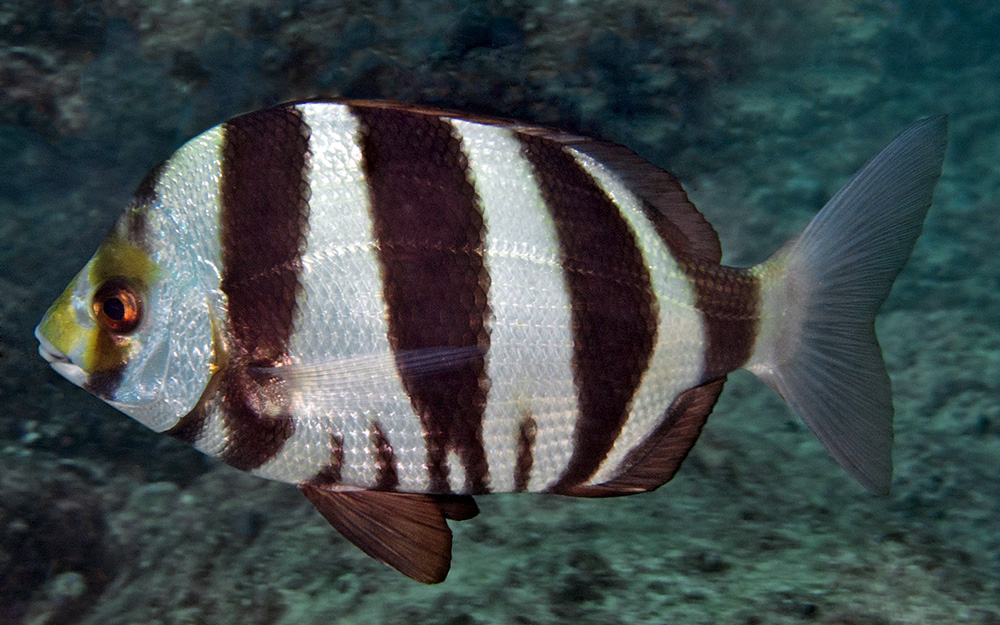Oman seabream
(Diplodus omanensis)

Classification
General data
Head and body deep, its depth 37.2 % of SL; head large, 37.5 % of SL; dorsal profile of head moderately steep; scale rows 5 on cheek; mouth small and horizontal, the maxilla reaching to below anterior margin of eyes and completely hidden under suborbitals when mouth closed; gill rakers small and 14 in number, eight on lower arch; six pairs of projecting incisor teeth in upper jaw and four pairs in lower jaw; posterior part of jaw with three rows of small molars; first dorsal spine is smallest (4.5 % of SL) while fourth (14.5 % of SL) longest; first anal-fin spine short (4.8 % of SL), 2 nd and 3 rd anal spines subequal (10 % of SL); caudal fin forked; upper lobe of caudal fin is slightly longer than lower one; pectoral-fins reaching to anal spine (Amir et al., 2013).
Diplodus omanensis was first recorded from Pakistan by Amir et al. (2013). This species was initially considered to be a subspecies Diplodus cervinus omanensis, described from Oman. Diplodus omanensis was known to be endemic to Oman but its distribution range has been extended up to Iran and Pakistan. The other subspecies Diplodus cervinus hottentotus (Smith, 1844) occurs only in southern Mozambique and South Africa (Randall, 1995).
source: The sparid fishes of Pakistan, with new distribution records
Head and body with silvery grayish to black tinge; five broad black bars from head to body, first one on head through eyes and four on body, first and second indistinctly bifurcated ventrally; two indistinct short narrow black bars ventrally in first silver interspace on body and one indistinct ventrally after second; snout partly grayish and black; margins of fins are also partly yellow and blackish, anal-fins are more blackish.










